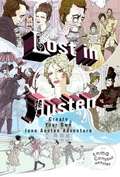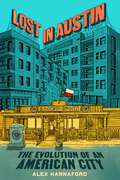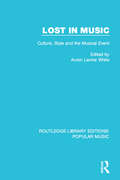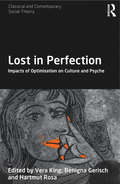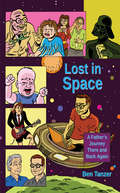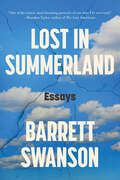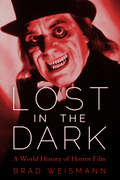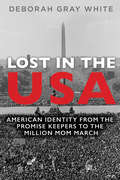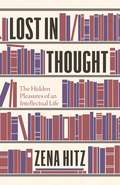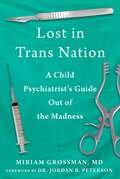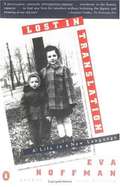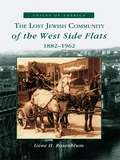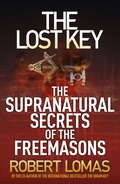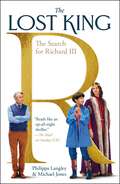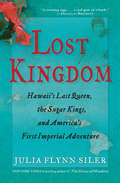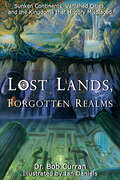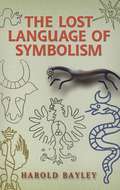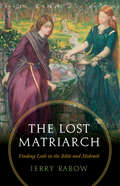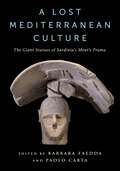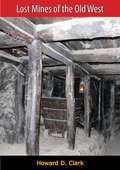- Table View
- List View
Lost in Austen: Create Your Own Jane Austen Adventure
by Emma Campbell WebsterBringing together Jane Austen's most beloved characters and storylines-a clever, playful, interactive, and highly entertaining approach to the wildly popular novels in which you, the reader, decide the outcome. Name: Elizabeth Bennet. Mission: To marry both prudently and for love. How? It's entirely up to the reader. The journey begins in Pride and Prejudice but quickly takes off on a whimsical Austen adventure of the reader's own creation. A series of choices leads the reader into the plots and romances of Austen's other works. Choosing to walk home from Netherfield Hall means falling into Sense and Sensibility and the infatuating spell of Mr. Willoughby. Accepting an invitation to Bath leads to Northanger Abbey and the beguiling Henry Tilney. And just where will Emma's Mr. Knightley fit in to the quest for a worthy husband? It's all up to the reader. A labyrinth of love and lies, scandals and scoundrels, misfortunes and marriages, Lost in Austen will delight and challenge any Austen lover.
Lost in Austin: The Evolution of an American City
by Alex HannafordA long-time Austinite and journalist’s exploration of the profound movements that have shaped Austin, Texas—charting the shifts within its vibrant music scene, the impact of rapid urbanization, and the challenges of gentrification—ultimately questioning what this city’s transformation signals for American urban identity.Austin isn’t what it used to be.This is a common sentiment amongst locals, offered with the same confused—and often disappointed—tone familiar to residents of Seattle, Portland, or San Francisco, where rapid growth and expansion have led to an urban identity crisis. Like those cities, Austin is known for its unique qualities: a thriving live music scene and housing affordability that historically made it a compelling home for creatives and self-described weirdos to roost. But now, as Big Tech infiltrates and climate change looms, Austin has become less familiar—and far less affordable.An exploration of the beloved city’s evolution, Lost in Austin also serves as a critical exploration of the transformation that has befallen one of America’s most beloved cities—and serves as a warning for what the homogenization of cities means for American urban identity. With a journalist’s perspective and the heart of an Austinite, Alex Hannaford delves into the consequences of the city’s rapid growth in chapters that chronicle the major movements permanently altering the city: a vanishing music scene, soaring property values, and the encroachment of major industry. Through keen reportage and extensive interviews, Lost in Austin unveils the toll of unchecked growth and the city’s shift from its rebellious spirit to commercialization.Through those stories—vibrant, colorful, and clearly full of love for this city—Hannaford raises a crucial question: How do American cities, once celebrated for their unique values, became casualties of their own rapid growth and success? And can they ever return to what they once were?
Lost in Music: Culture, Style and the Musical Event (Routledge Library Editions: Popular Music #5)
by Avron Levine WhiteThis collection of essays, first published in 1987, provides a sociological treatment of many musical forms – rock, jazz, classical – with special emphasis on the perspective of the practising musician. Among the topics covered are the legal structures governing musical production and the question of copyright; recording and production technology; the social character of musical style; and the impact of lyrical content, considered socially and historically.
Lost in Perfection: Impacts of Optimisation on Culture and Psyche (Classical and Contemporary Social Theory)
by Vera King Benigna Gerisch Hartmut RosaThe permanent struggle for optimisation can be seen as one of the most significant cultural principles of contemporary Western societies: the demand for improved performance and efficiency as well as the pursuit of self-improvement are con-sidered necessary in order to keep pace with an accelerated, competitive modern-ity. This affects not only work and education, but also family life, parent–child relationships and intimate relationships in respect to the body and the self, in regard to the public as well as the private realm. Bringing together contributions from renowned scholars from the fields of sociology, psychology and psycho-analysis, this book explores the impacts of optimisation on culture and psyche, examining the contradictions and limitations of optimisation, in conjunction with the effects of social transformations on individuals and shifts in regard to the meaning of ‘pathology’ and ‘normality’.
Lost in Space
by Steven Lafler Ben TanzerLost in Space is a sometimes funny, sometimes sad, but always lively essay collection about fathers and sons, and their relationship to not only one another, but pop culture, death, and sex-because sex sells, even if you're otherwise focused on parenting and the generation spanning cultural impact of Star Wars.The essays in Lost in Space are focused on an array of child-rearing topics including sleep, discipline, first haircuts, deceased parents/grandparents and illness, and the inherent challenges and humor that coincide with, and are intrinsically tied-into, these stages of life. The essays also recognize the ongoing presence of the author's dead father in his life even as he seeks to parent without his father's guidance or advice.
Lost In Summerland: Essays
by Barrett SwansonBarrett Swanson embarks on a personal quest across the United States to uncover what it means to be an American amid the swirl of our post-truth climate in this collection of critically acclaimed essays and reportage. <P><P>A trip with his brother to a New York psychic community becomes a rollicking tour through the world of American spiritualism. <P><P>At a wilderness retreat in Ohio, men seek a cure for toxic masculinity, while in the hinterlands of Wisconsin, antiwar veterans turn to farming when they cannot sustain the heroic myth of service. And when his best friend’s body washes up on the shores of the Mississippi River, he falls into the gullet of true crime discussion boards, exploring the stamina of conspiracy theories along the cankered byways of the Midwest. <P><P>In this exhilarating debut, Barrett Swanson introduces us to a new reality. At a moment when grand unifying narratives have splintered into competing storylines, these critically acclaimed essays document the many routes by which people are struggling to find stability in the aftermath of our country’s political and economic collapse, sometimes at dire and disillusioning costs.
Lost in the Dark: A World History of Horror Film
by Brad WeismannTwo horror films were nominated for the Academy Award for Best Picture in 2018, and one of them—The Shape of Water—won. Since 1990, the production of horror films has risen exponentially worldwide, and in 2013, horror films earned an estimated $400 million in ticket sales. Horror has long been the most popular film genre, and more horror movies have been made than any other kind. We need them. We need to be scared, to test ourselves, laugh inappropriately, scream, and flinch. We need to get through them and come out, blinking, still in one piece. Lost in the Dark: A World History of Horror Film is a straightforward history written for the general reader and student that can serve as a comprehensive reference work. The volume provides a general introduction to the genre, serves as a guidebook to its film highlights, and celebrates its practitioners, trends, and stories. Starting with silent-era horror films and ending with 2020’s The Invisible Man, Lost in the Dark looks at decades of horror movies. Author Brad Weismann covers such topics as the roots of horror in literature and art, monster movies, B-movies, the destruction of the American censorship system, international horror, torture porn, zombies, horror comedies, horror in the new millennium, and critical reception of modern horror. A sweeping survey that doesn’t scrimp on details, Lost in the Dark is sure to satisfy both the curious and the completist.
Lost in the USA: American Identity from the Promise Keepers to the Million Mom March (Women, Gender, and Sexuality in American History)
by Deborah Gray WhiteRemembered as an era of peace and prosperity, turn-of-the-millennium America was also a time of mass protest. But the political demands of the marchers seemed secondary to an urgent desire for renewal and restoration felt by people from all walks of life. Drawing on thousands of personal testimonies, Deborah Gray White explores how Americans sought better ways of living in, and dealing with, a rapidly changing world. From the Million Man, Million Woman, and Million Mom Marches to the Promise Keepers and LGBT protests, White reveals a people lost in their own country. Mass gatherings offered a chance to bond with like-minded others against a relentless tide of loneliness and isolation. By participating, individuals opened a door to self-discovery that energized their quests for order, autonomy, personal meaning, and fellowship in a society that seemed hostile to such deeper human needs. Moving forward in time, White also shows what marchers found out about themselves and those gathered around them. The result is an eye-opening reconsideration of a defining time in contemporary America.
Lost in Thought: The Hidden Pleasures of an Intellectual Life
by Zena HitzAn invitation to readers from every walk of life to rediscover the impractical splendors of a life of learningIn an overloaded, superficial, technological world, in which almost everything and everybody is judged by its usefulness, where can we turn for escape, lasting pleasure, contemplation, or connection to others? While many forms of leisure meet these needs, Zena Hitz writes, few experiences are so fulfilling as the inner life, whether that of a bookworm, an amateur astronomer, a birdwatcher, or someone who takes a deep interest in one of countless other subjects. Drawing on inspiring examples, from Socrates and Augustine to Malcolm X and Elena Ferrante, and from films to Hitz's own experiences as someone who walked away from elite university life in search of greater fulfillment, Lost in Thought is a passionate and timely reminder that a rich life is a life rich in thought.Today, when even the humanities are often defended only for their economic or political usefulness, Hitz says our intellectual lives are valuable not despite but because of their practical uselessness. And while anyone can have an intellectual life, she encourages academics in particular to get back in touch with the desire to learn for its own sake, and calls on universities to return to the person-to-person transmission of the habits of mind and heart that bring out the best in us.Reminding us of who we once were and who we might become, Lost in Thought is a moving account of why renewing our inner lives is fundamental to preserving our humanity.
Lost in Trans Nation: A Child Psychiatrist's Guide Out of the Madness
by Miriam GrossmanThroughout our country, atrocities are taking place in doctor&’s offices and hospital operating rooms. Physically healthy children and adolescents are being permanently disfigured and sometimes sterilized. Those youth say they&’re transgender, and we—their parents, teachers, therapists, and doctors—are supposed to agree with their self-diagnosis and take a back seat as they make the most consequential decision of their lives: to alter their bodies in order to, we are told, &“align&” them with their minds. Medical, educational, and government authorities advise us to support the &“gender journeys&” of still developing kids, including medical interventions with poor evidence of long-term improvement. This would not be acceptable in any other field of medicine. Indeed, the treatments our medical authorities and Washington call &“crucial&” and &“life-saving&” have been banned in progressive Sweden, Finland, and Britain. Dr. Miriam Grossman is a child and adolescent psychiatrist whose practice consists of trans-identified youth and their families. In Lost in Trans Nation, she implores parents to reject the advice of gender experts and politicians and trust their guts—their parental instincts—in the face of an onslaught of ideologically driven misinformation that steers them and their children toward risky decisions they may end up mourning for the rest of their lives. The beliefs that male and female are human inventions; that the sex of a newborn is arbitrarily &“assigned&”; and that as a result the child requires &“affirmation&” through medical interventions—these ideas are divorced from reality and therefore hazardous, especially to children. The core belief—that biology can and should be denied—is a repudiation of reality and a mockery of what hard science teaches about being male and female. Dr. Grossman believes that parents know their child best; they especially know if they have a son or daughter. But currently in our country when it comes to gender identity, everyone knows better than mom and dad. Schools enable students to live double lives—Patrick at home, Patti at school. Activists tell kids their loving homes are &“unsafe&” when parents voice doubts about the child&’s new identity. For refusing to see their son as their daughter, parents might be reported to protective services, a development that can lead to a family&’s destruction. Lost in Trans Nation arms parents with the ammunition to avoid, or, if necessary, fight what many families describe as the most difficult challenge of their lives. Parents will learn what to say and how—at home, at school, and if necessary, to police when they appear at the door. &“Don&’t be blindsided like so many parents I know,&” warns Grossman, &“be proactive and get educated. Feel prepared and confident to discuss trans, nonbinary, or whatever your child brings to the dinner table.&” Whether it&’s the &“trans is as common as red hair&” claim, or the &“I&’m not your son, I&’m your daughter&” proclamation, or the &“do you prefer a live son or a dead daughter&’ threat, says Grossman, no family is immune, and every parent must be prepared. No child is born in the wrong body, Dr. Grossman reassures us, their bodies are just fine; it&’s their emotional lives that need healing. Whether you&’re facing a gender identity battle in your home right now, or want to prevent one, you need this book to guide you and your loved ones out of the madness.
Lost in Transition: Ethnographies of Everyday Life After Communisim
by Kristen GhodseeLost in Transition tells of ordinary lives upended by the collapse of communism. Through ethnographic essays and short stories based on her experiences with Eastern Europe between 1989 and 2009, Kristen Ghodsee explains why it is that so many Eastern Europeans are nostalgic for the communist past. Ghodsee uses Bulgaria, the Eastern European nation where she has spent the most time, as a lens for exploring the broader transition from communism to democracy. She locates the growing nostalgia for the communist era in the disastrous, disorienting way that the transition was handled. The privatization process was contested and chaotic. A few well-connected foreigners and a new local class of oligarchs and criminals used the uncertainty of the transition process to take formerly state-owned assets for themselves. Ordinary people inevitably felt that they had been robbed. Many people lost their jobs just as the state social-support system disappeared. Lost in Transition portrays one of the most dramatic upheavals in modern history by describing the ways that it interrupted the rhythms of everyday lives, leaving confusion, frustration, and insecurity in its wake.
Lost in Transition: The Dark Side of Emerging Adulthood
by Christian SmithLife for emerging adults is vastly different today than it was for their counterparts even a generation ago. Young people are waiting longer to marry, to have children, and to choose a career direction. As a result, they enjoy more freedom, opportunities, and personal growth than ever before. But the transition to adulthood is also more complex, disjointed, and confusing. In this book, Christian Smith and his collaborators draw on 230 in-depth interviews with a broad cross-section of emerging adults (ages 18-23) to investigate the difficulties young people face today, the underlying causes of those difficulties, and the consequences both for individuals and for American society as a whole. Rampant consumer capitalism, ongoing failures in education, hyper-individualism, postmodernist moral relativism, and other aspects of American culture are all contributing to the chaotic terrain that emerging adults must cross. Smith identifies five major problems facing very many young people today: confused moral reasoning, routine intoxication, materialistic life goals, regrettable sexual experiences, and disengagement from civic and political life. The trouble does not lie only with the emerging adults or their poor individual decisions but has much deeper roots in mainstream American culture―a culture which emerging adults have largely inherited rather than created. Older adults, Smith argues, must recognize that much of the responsibility for the pain and confusion young people face lies with them. Rejecting both sky-is-falling alarmism on the one hand and complacent disregard on the other, Smith suggests the need for what he calls "realistic concern"―and a reconsideration of our cultural priorities and practices―that will help emerging adults more skillfully engage unique challenges they face. Even-handed, engagingly written, and based on comprehensive research, the book brings much needed attention to the darker side of the transition to adulthood.
Lost In Translation: A Life In A New Language
by Eva HoffmanWhen her parents brought her from the war-ravaged, faded elegance of her native Cracow in 1959 to settle in well-manicured, suburban Vancouver, Eva Hoffman was thirteen years old. Entering into adolescence, she endured the painful pull of nostalgia and struggled to express herself in a strange unyielding new language. <P><P> Her spiritual and intellectual odyssey continued in college and led her ultimately to New York’s literary world yet still she felt caught between two languages, two cultures. But her perspective also made her a keen observer of an America in the flux of change. <P> A classically American chronicle of upward mobility and assimilation. Lost in Translation is also an incisive meditation on coming to terms with one’s own uniqueness, on learning how deeply culture affects the mind and body, and finally, on what it means to accomplish a translation of one’s self.
Lost Jewish Community of the West Side Flats 1882-1962, The: 1882-1962 (Voices of America)
by Gene H. RosenblumBeginning in 1882, many Russian and Eastern-European Jews who fled to the United States settled in the "West Side Flats" in St. Paul, Minnesota. The area once stretched from the banks of the Mississippi River to the cliffs of the West Side Hills, about 320 acres in all, but has since fallen victim to the vagaries of the mighty river and the progress of "urban renewal." The Lost Jewish Community of the West Side Flats: 1882-1962 takes the reader on a pictorial tour down memory lane. The families, houses, businesses, streets, and synagogues-all vanished now-are brought back to life through vintage photographs from the archives of the Jewish Historical Society of the Upper Midwest, the Minnesota Historical Society, and the private collections of many former residents. This is a memoir of a historic neighborhood that can no longer be visited.
The Lost Key: The Supranatural Secrets of the Freemasons
by Robert LomasRobert Lomas is the bestselling co-author of The Hiram Key and other international bestsellers on Freemasonic mysteries. Many say he is the model for Dan Brown's hero, Robert Langdon.The Lost Key contains revelations that only an initiate of the highest orders of esoteric Freemasonry is in a position to make. Here is the truth behind the hints in Dan Brown's The Lost Symbol that Freemasonry is concerned to reawaken the hidden potentialities and powers of the human mind.The thrilling narrative of this new book follows a candidate for initiation as he rises through the different grades of initiation, taking part in ceremonies that are sometimes terrifying but always revealing of new knowledge and presenting new mysteries which will only be solved when the next stage of initiation has been achieved. Dramatic episodes include the re-enacting of an ancient murder from 3,000 years ago in full gory detail, lowering the candidate on the end of a rope into a dark vault under the floor of the temple, holding a dagger to the candidates naked breast, and making the candidate attend his own funeral.In the secret teachings revealed to some high-level initiates, there is a type of instruction which seems curiously similar to religious and mystical teachings. Astrology, angels, chakras and the powers of the mind to operate independently of the body, such as in remote viewing, are all a part of Freemasonic lore.Robert Lomas is both a physicist - he teaches physics at Bradford Unversity - and a Freemason. Here he reveals to a wider public and also explains these secret teachings for the first time. He shows that while they are dismissed as superstitious by campaigners for atheism such as Richard Dawkins, they are very much part of the strange, paradoxical world opened up by the latest thinking in quantum physics. This is why he prefers to call them 'Supranatural'.
The Lost Key: The Supranatural Secrets of the Freemasons
by Robert LomasRobert Lomas is the bestselling co-author of The Hiram Key and other international bestsellers on Freemasonic mysteries. Many say he is the model for Dan Brown's hero, Robert Langdon.The Lost Key contains revelations that only an initiate of the highest orders of esoteric Freemasonry is in a position to make. Here is the truth behind the hints in Dan Brown's The Lost Symbol that Freemasonry is concerned to reawaken the hidden potentialities and powers of the human mind.The thrilling narrative of this new book follows a candidate for initiation as he rises through the different grades of initiation, taking part in ceremonies that are sometimes terrifying but always revealing of new knowledge and presenting new mysteries which will only be solved when the next stage of initiation has been achieved. Dramatic episodes include the re-enacting of an ancient murder from 3,000 years ago in full gory detail, lowering the candidate on the end of a rope into a dark vault under the floor of the temple, holding a dagger to the candidates naked breast, and making the candidate attend his own funeral.In the secret teachings revealed to some high-level initiates, there is a type of instruction which seems curiously similar to religious and mystical teachings. Astrology, angels, chakras and the powers of the mind to operate independently of the body, such as in remote viewing, are all a part of Freemasonic lore.Robert Lomas is both a physicist - he teaches physics at Bradford Unversity - and a Freemason. Here he reveals to a wider public and also explains these secret teachings for the first time. He shows that while they are dismissed as superstitious by campaigners for atheism such as Richard Dawkins, they are very much part of the strange, paradoxical world opened up by the latest thinking in quantum physics. This is why he prefers to call them 'Supranatural'.
The Lost King: The Search for Richard III
by Philippa Langley Michael JonesThe official inside story of the discovery of the bones of Richard III now a major motion picture starring Sally Hawkins and Steve Coogan The mystery of who Richard III really was has fascinated historians, readers and audiences familiar with Shakespeare's dastardly portrait of a hunchbacked monster of royalty for centuries. In 2012, the remains of a man with a curving spine, who possibly was killed in battle, were discovered underneath the paving of a parking lot in Leicester, England. Phillipa Langley, head of The Richard III Society, spurred on by the work of the historian Michael Jones, led the team of who uncovered the remains, certain that she had found the bones of the monarch. When DNA verification later confirmed that the skeleton was, indeed, that of King Richard III, the discovery ranks among the great stories of passionate intuition and perseverance against the odds.The news of the discovery of Richard's remains has been widely reported by the British as well as worldwide and was front page news for both the New York Times and The Washington Post. Many believe that now, with King Richard III's skeleton in hand, historians will finally begin to understand what happened to him following the Battle of Bosworth Field (twenty miles or so from Leicester) and, ultimately, to know whether he was the hateful, unscrupulous monarch of Shakespeare's drama or a much more benevolent king interested in the common man. Written in alternating chapters, with Richard's 15th century life told by historian Michael Jones (author of the critically acclaimed Bosworth - 1485) contrasting with the 21st century eyewitness account of the search and discovery of the body by Philippa Langley, The Lost King will be both an extraordinary portrait of the last Plantagenet monarch and the inspiring story of the archaeological dig that finally brings the real King Richard III into the light of day.
Lost Kingdom: Hawaii's Last Queen, the Sugar Kings, and America's First Imperial Adventure
by Julia Flynn SilerThe New York Times–bestselling author delivers “a riveting saga about Big Sugar flexing its imperialist muscle in Hawaii . . . A real gem of a book” (Douglas Brinkley, author of American Moonshot). Deftly weaving together a memorable cast of characters, Lost Kingdom brings to life the clash between a vulnerable Polynesian people and relentlessly expanding capitalist powers. Portraits of royalty and rogues, sugar barons, and missionaries combine into a sweeping tale of the Hawaiian Kingdom’s rise and fall. At the center of the story is Lili‘uokalani, the last queen of Hawai‘i. Born in 1838, she lived through the nearly complete economic transformation of the islands. Lucrative sugar plantations gradually subsumed the majority of the land, owned almost exclusively by white planters, dubbed the “Sugar Kings.” Hawai‘i became a prize in the contest between America, Britain, and France, each seeking to expand their military and commercial influence in the Pacific. The monarchy had become a figurehead, victim to manipulation from the wealthy sugar plantation owners. Lili‘u was determined to enact a constitution to reinstate the monarchy’s power but was outmaneuvered by the United States. The annexation of Hawai‘i had begun, ushering in a new century of American imperialism. “An important chapter in our national history, one that most Americans don’t know but should.” —The New York Times Book Review “Siler gives us a riveting and intimate look at the rise and tragic fall of Hawaii’s royal family . . . A reminder that Hawaii remains one of the most breathtaking places in the world. Even if the kingdom is lost.” —Fortune “[A] well-researched, nicely contextualized history . . . [Indeed] ‘one of the most audacious land grabs of the Gilded Age.’” —Los Angeles Times
Lost Lands, Forgotten Realms: Sunken Continents, Vanished Cities, and the Kingdoms that History Misplaced
by Bob Curran“A comprehensive encyclopedia of fantastic places straddling the nebulous borderlands between fact and fantasy.” —Frank Joseph, author of Opening the Ark of the CovenantThere are places that turn up in literature or in film—mystical and legendary places whose names may be familiar but about which we know little. We nod knowingly at the reference, but are often left wondering about places such as Atlantis, the lost land overwhelmed by the sea, or El Dorado, the fabulous city that vanished somewhere in the South American jungles. Other names are more evocative—Mount Olympus, the Garden of Eden, the mystic Isle of Avalon, and Davy Jones’ Locker.But did such places actually exist and if so, where were they, and what really happened? What are the traditions and legends associated with them? In the fascinating book, Lost Lands, Forgotten Realms, historian Dr. Bob Curran sets out to find the answers by journeying to the far-flung corners of the world and to the outer reaches of human imagination.“In this fascinating encyclopedia of places that time forgot, Irish psychologist and historian Dr. Bob Curran brings the legends alive.” —Nexus magazine“Learned and erudite, yet written in an accessible and exceptionally readable style, this book is invaluable for those interested in the mysteries of vanished civilizations.” —Brian Haughton, author of Hidden History
The Lost Language of Symbolism
by Harold BayleyThere's always a story behind the story, but the keenest observers have to break through the surface to reach it. This remarkable book reveals the hidden meaning behind familiar images and words, from the origins of Santa Claus and the meaning of Cinderella's name to the metaphoric significance of the unicorn and the fleur-de-lys.A prominent authority on symbols, author Harold Bayley spent years gathering and compiling the contents of this volume. Mythology, folklore, religious texts, and fairy tales from around the world constitute his primary sources. Bayley also draws upon the secret traditions of ancient cultures and medieval mystical sects to deconstruct the symbols embedded in watermarks and printers' emblems. Most of these images have lost their earliest significance and now serve strictly commercial purposes; Bayley explains their original meanings, and he cross-references similarities between symbols and stories across the globe to illuminate their evolving cultural significance. More than 1,400 illustrations enhance this classic work, which features an index for ease of reference.
The Lost Massey Lectures: Recovered Classics from Five Great Thinkers (The CBC Massey Lectures)
by John Galbraith Paul Goodman Jane Jacobs Eric Kierans Martin King Jr.The CBC Massey Lectures, Canada's preeminent public lecture series, are for many of us a highly anticipated annual feast of ideas. However, some of the finest lectures, by some of the greatest minds of modern times, have been lost for many years -- unavailable to the public in any form. Important thinkers whose Massey Lectures are lamentably out of print include the likes of Martin Luther King, Jr., John Kenneth Galbraith, Jane Jacobs, Paul Goodman, and Eric Kierans. Each of these lecturers spoke on a subject at the heart of their intellectual and spiritual concerns -- King on race and prejudice, Galbraith on economics and poverty, Jacobs on Canadian cities and Quebec separatism, Goodman on the moral ambiguity of America, Kierans on globalism and the nation-state -- and their words are not only of considerable historical significance but remain hugely relevant to the problems we face today. At last, a selection of these lost lectures is available to a world so hungry for, and yet in such short supply of, innovative ideas. The Lost Massey Lectures includes an introduction by Bernie Lucht, who has been the executive producer of CBC Radio's Ideas and the Massey Lectures since 1984.
The Lost Matriarch: Finding Leah in the Bible and Midrash
by Jerry RabowThe Lost Matriarch offers a unique response to the sparse and puzzling biblical treatment of the matriarch Leah. Although Leah is a major figure in the book of Genesis, the biblical text allows her only a single word of physical description and two lines of direct dialogue. The Bible tells us little about the effects of her lifelong struggles in an apparently loveless marriage to Jacob, the husband she shares with three other wives, including her beautiful younger sister, Rachel. Fortunately, two thousand years of traditional and modern commentators have produced many fascinating interpretations (midrash) that reveal the far richer story of Leah hidden within the text. Through Jerry Rabow’s weaving of biblical text and midrash, readers learn the lessons of the remarkable Leah, who triumphed over adversity and hardship by living a life of moral heroism. The Lost Matriarch reveals Leah’s full story and invites readers into the delightful, provocative world of creative rabbinic and literary commentary. By experiencing these midrashic insights and techniques for reading “between the lines,” readers are introduced to what for many will be an exciting new method of personal Bible interpretation.
A Lost Mediterranean Culture: The Giant Statues of Sardinia's Mont'e Prama (Columbiana)
by Faedda, Barbara; Carta, PaoloThousands of shattered limestone pieces came to light in 1974 at the Mont’e Prama site in western Sardinia. They have been reassembled into dozens of striking, colossal statues that reward close study by archaeologists, historians, conservators, and restorers. The giant statues and the individual tombs in this monumental necropolis—sculpted by a powerful Mediterranean civilization—make Mont’e Prama a uniquely rich representation of a culture’s values and traditions in the Bronze Age and the Iron Age.This is the first English-language book to explore Mont’e Prama’s limestone statues—among the most important archaeological discoveries of the past fifty years and the source of fresh discoveries even today. It is written by the people who are leading the excavation and restoration of these treasures; researching the artifacts and their context; and presenting the eerie faces, towering bodies, and sprawling site to the world. A Lost Mediterranean Culture takes the reader through the details of the various discoveries at Mont’e Prama, recounting the history of scholarship on the artifacts and describing the landscape, the context, and the meticulous restoration efforts. It also addresses the illicit trafficking of Sardinian cultural property.Lavishly illustrated with photographs and other figures that showcase fine details, A Lost Mediterranean Culture offers fresh information for specialists and captivates a wider audience with the beauty of these massive sculptures.
Lost Mines of the Old West
by Howard D. Clark Ray HetheringtonAUTHENTIC STORY OF THE “PEGLEG” AND 21 OTHER STORIES OF FABULOUS LOST MINES!Author Howard D. Clark, a Kansas native, had an extensive career in journalism with appointments including managing editor for the Farm Press Publications of Chicago, Illinois; staff writer for a number of business papers; and statistical and analytical specialist for other periodicals and concerns.This background, plus extensive travel on the Pacific Coast, fitted him particularly well to undertake the writing of this book. Lost mine legends make up a large section of Western folklore. In this collection he has made a sincere effort to present only the most important and best authenticated of them all. He has also had the invaluable assistance of Ray Hetherington, an unquestioned authority in the field of Western Americana. Much of the source material used herein was collected by Mr. Hetherington through thirty years of extensive research.First published in 1946, this collection of lost mine legends is considered among the most complete and factual of any ever assembled.
Lost Napa Valley (Lost)
by Lauren CoodleyNapa Valley, once known for its cattle and silver mines, has grown into an international wine destination. On the way, many buildings and institutions have vanished. From the Von Uhlit family's fruit farm in Napa to the Wheeler Ranch in St. Helena, fields and orchards became neighborhoods and vineyards. The Dolphin, a steamboat that once delivered travelers from San Francisco, was replaced by faster transport, and the Napa State Hospital's original "castle" was demolished. The Sawyer Tannery, in operation for over one hundred years, closed its doors in 1990, and destinations like the Kay Von Drive-In and the Bel Aire Bowl now live on only in memory. Join author and historian Lauren Coodley as she celebrates these once-beloved landmarks in California's Wine Country.
